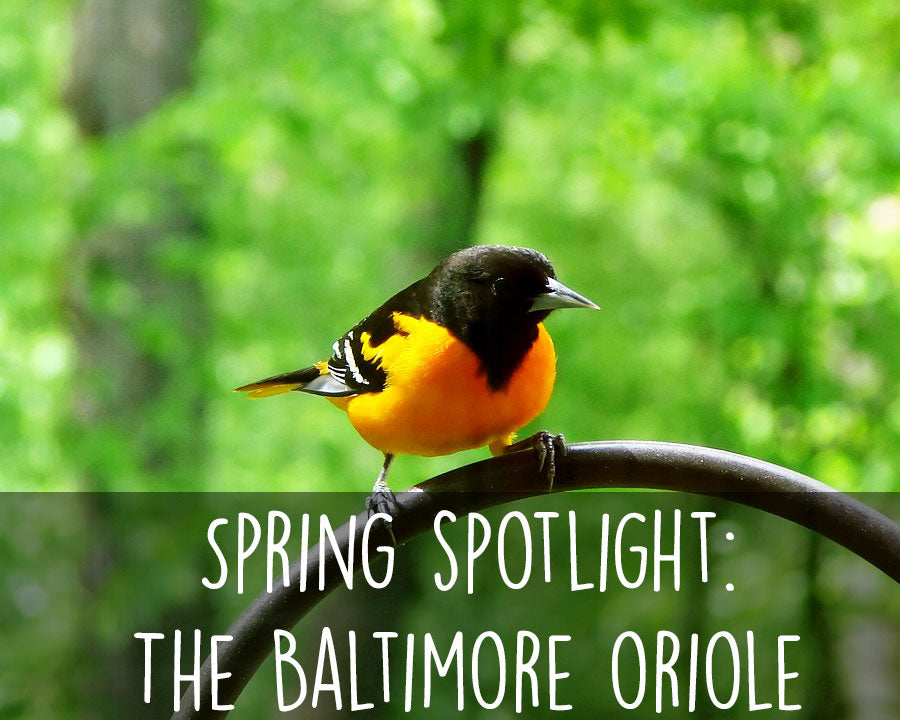Offer
Provide additional details about the offer you're running.
Provide additional details about the offer you're running.
Provide additional details about the offer you're running.

With their unmistakable orange plumage, the Baltimore oriole is one of the most identifiable birds here in our area. With a Major League Baseball team name to their credit, these birds are a favourite of birders across most of North America, particularly during this time of year as they migrate from their southern haunts into northern portions of the United States and Canada.
While we cannot seem to attach any extraordinary circumstances to the reasoning, sightings for orioles here in the Ottawa area over the past couple of weeks are literally off the charts. With multiple sightings (and accompanying photography) reported in our Facebook Group, we thought it to be a more than opportune time to highlight these special birds and provide some guidance as to how to attract more of them to your yard this spring.
Identification
As we stated above, spotting these birds visually is quite easy. The hallmark orange plumage found in males during the spring months is unmistakable. Males feature a bright orange breast, rump and outer tail feathers which make it easy to identify in the field. Outside of their orange colouring, their head and back are completely black showcasing their strong relation to the blackbird family.
Females are similar in nature but with slightly less fanfare. While variable, female colouring ranges between a pale brown to yellow colouring on their head, back, breast and tail and are without much in the way of stark black plumage.
Another identifiable feature of these beautiful birds is their strong, pointed bill which they often use to pick away at fresh fruit in feeders or at insects high in the tree tops.
Where to Find the Baltimore Oriole
As one of our later migrants, these birds are only just arriving here in the Ottawa area after having spent the winter months in Caribbean regions and Florida, where they will overwinter. During the spring months, they can be found high in treetops flitting around in search of insects or the freshest of fruit available to them at the time.
These birds are found throughout most of the eastern seaboard and as far west as Alberta and a small portion of British Columbia here in Canada.

Vocals
For those willing to learn, their calls and songs can be as unmistakable as their signature orange plumage. Denoted by a short series of paired notes repeated between two and seven times in succession, their songs are flutelike and high pitched, again often being broadcast from high in the trees above us here on the ground.
During this time of year some mature males will even participate in a flutter-style drumming by beating their wings while in flight.
High Quality Blend